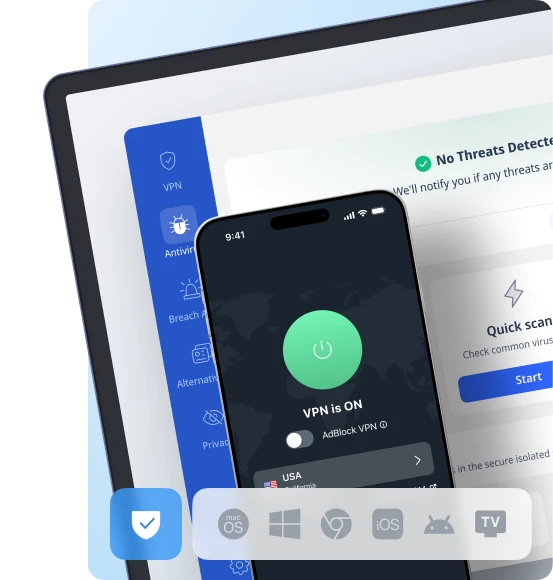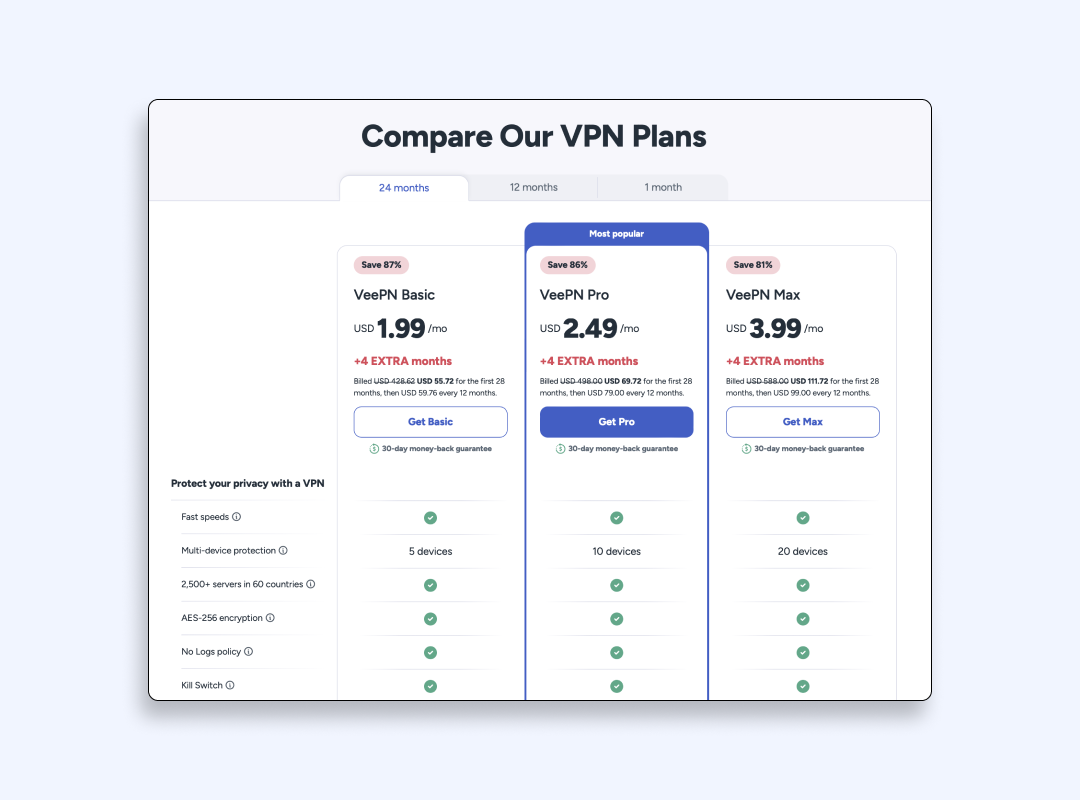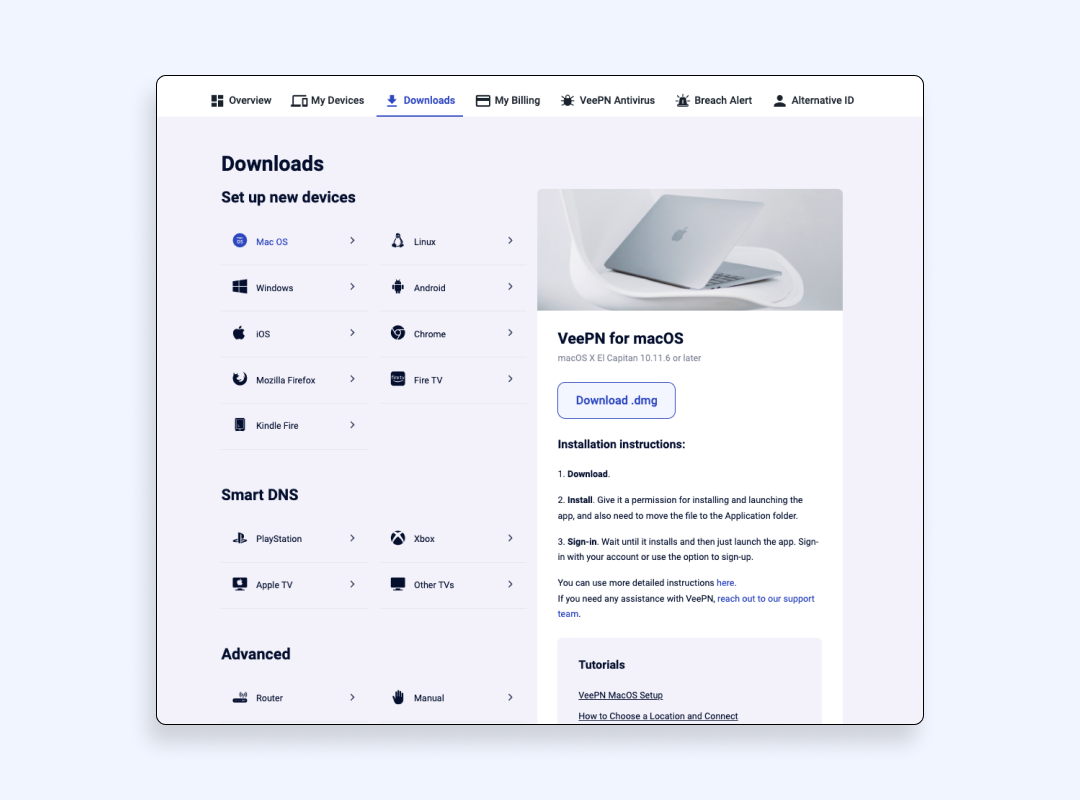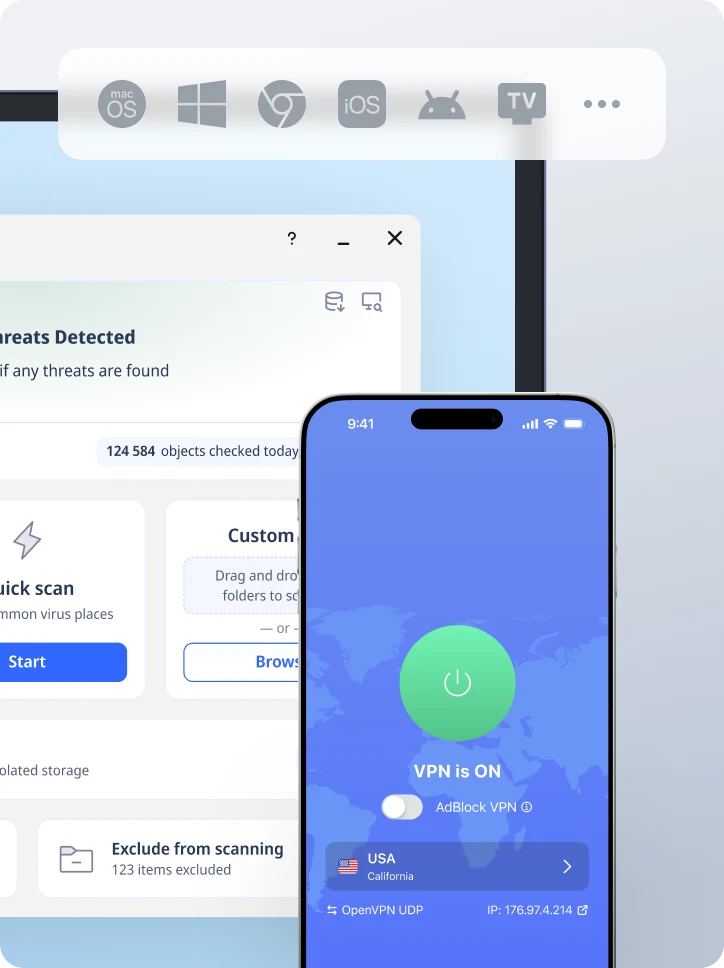How To Remove Mugshots From The Internet: Reclaim Your Online Privacy Step-by-Step
Discovering a mugshot of yourself online is a deeply distressing experience. But managing your information online, including mugshots, arrest records, and other sensitive data, is still crucial for protecting your reputation and privacy. No matter if the charges were dropped, you were not found guilty, or your record was expunged, the digital footprint often lingers, impacting your job prospects, relationships, and both your online and offline reputation.
Wondering how to remove a mugshot from the Internet? This guide will walk you through each step of reclaiming your privacy and removing your mugshot online for free. Further, we will cover where your mugshot appears, including checking other search engine results beyond Google, to submitting a mugshot removal request.

Quick mugshot removal guide
Follow these simple steps to remove your mugshot from the Internet:
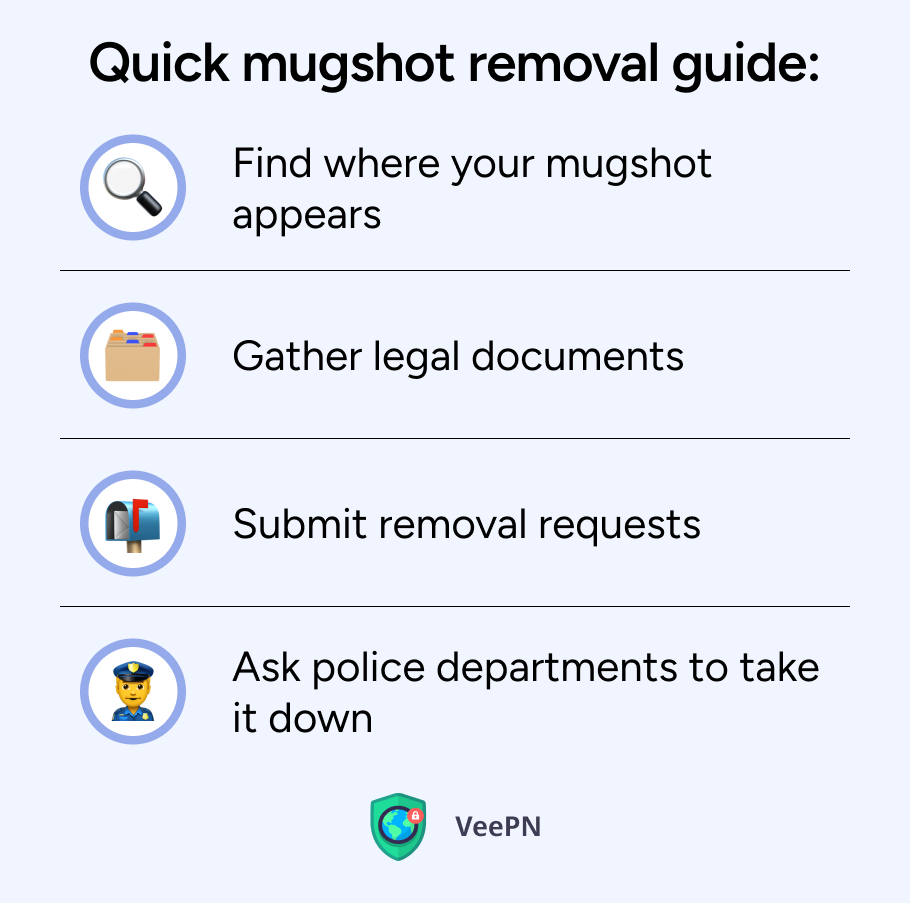
- Find where your mugshot appears: Google your name with terms like “mugshot” or “arrest,” and check common mugshot websites like Mugshots.com or Arrests.org.
- Gather legal documents: Prepare proof of dismissal, expungement, or court orders that justify removal.
- Submit removal requests: Visit each site and follow their removal instructions. Some accept emailed requests, others have forms..
- Ask police departments to take it down: If the original image is on a law enforcement site, request its removal directly.
The real impact of an online mugshot
Having a mugshot online, even after an acquittal or dropped charges, can have lasting effects. Employers may choose other candidates, landlords may reject rental applications, and friends may unfairly judge you. The social stigma attached to a mugshot can linger unless you act fast.
Here are the most common consequences of having your mugshot online:
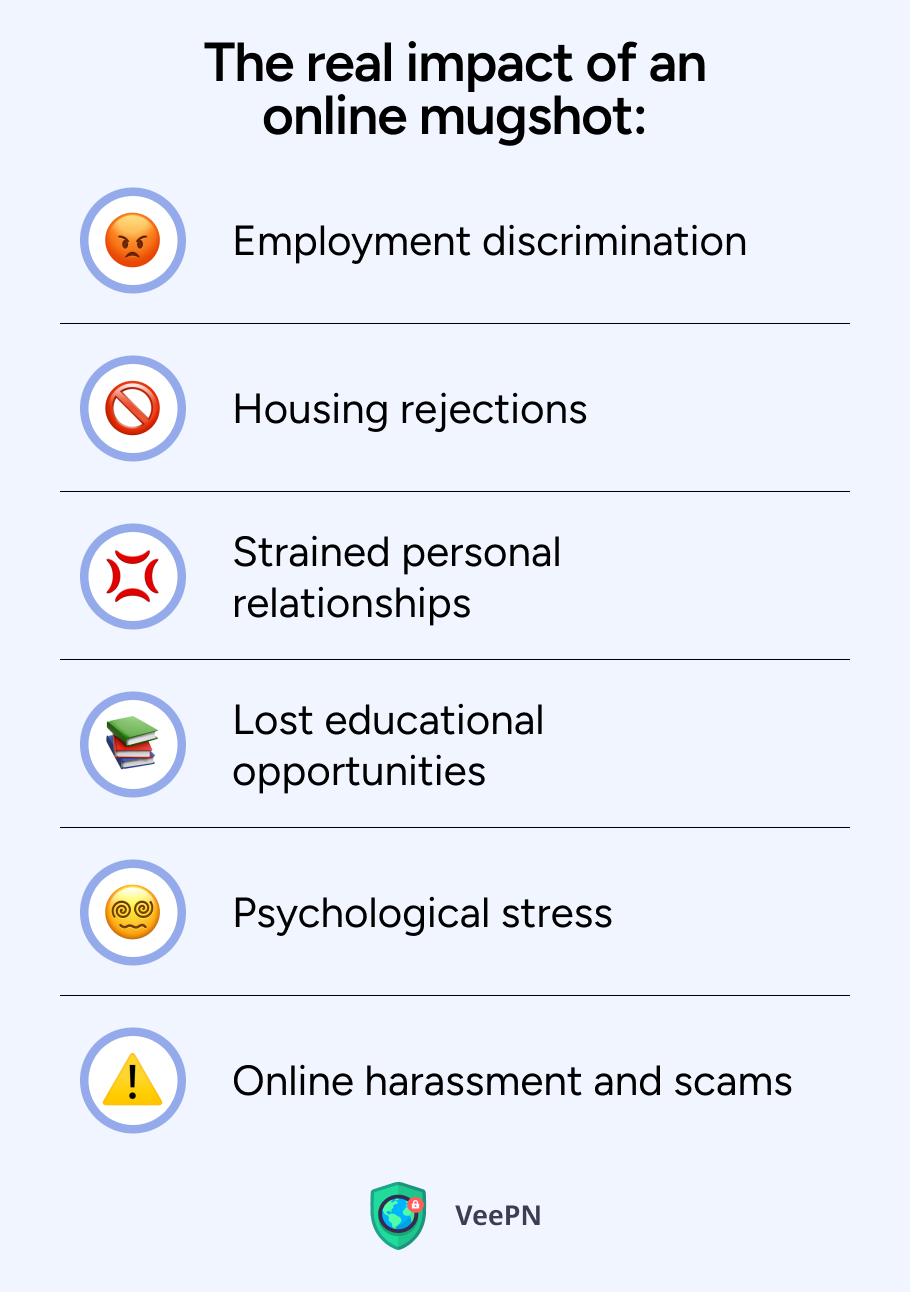
- Employment discrimination: Many companies run background checks. A visible mugshot can make you look untrustworthy, regardless of the case outcome.
- Housing rejections: Landlords often screen their potential applicants. A mugshot can get you disqualified instantly, especially in competitive housing markets.
- Strained personal relationships: Friends, acquaintances or romantic partners may find the mugshot and jump to false conclusions, damaging trust.
- Lost educational opportunities: Colleges and universities may reconsider admissions or scholarships if they find a mugshot during vetting.
- Psychological stress: Knowing your image is associated with a criminal record, even falsely, can be mentally exhausting and affect self-esteem.
- Online harassment and scams: Public mugshots can make you a target for harassment, impersonation or extortion by malicious actors.
This is why you need to act proactively and protect your digital identity.
How mugshots end up online
Mugshots are considered public records, so they’re available through government databases and law enforcement websites. But the real problem is when private third-party websites, often called mugshot aggregators, scrape these records using bots.
Here’s how mugshots end up online:
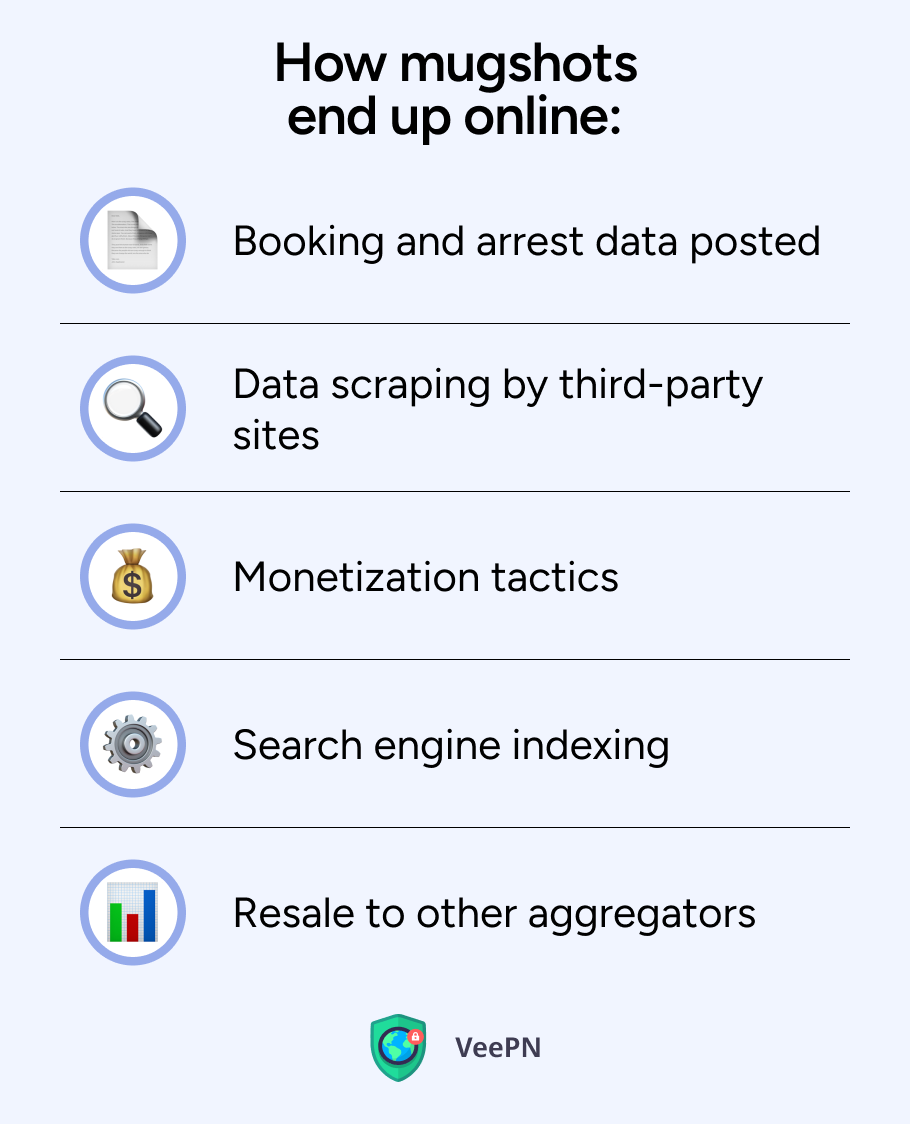
- Booking and arrest data posted: Local police or sheriff departments post booking photos and arrest records on their websites for transparency.
- Data scraping by third-party sites: Mugshot websites use bots to harvest this public data regularly and repost it on their own platforms.
- Monetization tactics: Some sites rely on ad revenue or charge fees for removal, often targeting people desperate to restore their online reputation.
- Search engine indexing: Once posted on governmental sites, mugshots become searchable on Google and other platforms, making them visible to anyone with an Internet connection.
- Resale to other aggregators: Some mugshot sites sell or share their data with others, making a single mugshot appear on multiple domains.
This cycle creates a digital stain unless you take proactive steps to remove the image and prevent future exposure.
Step-by-step guide to remove a mugshot
To remove your mugshot from the Internet, do the following:
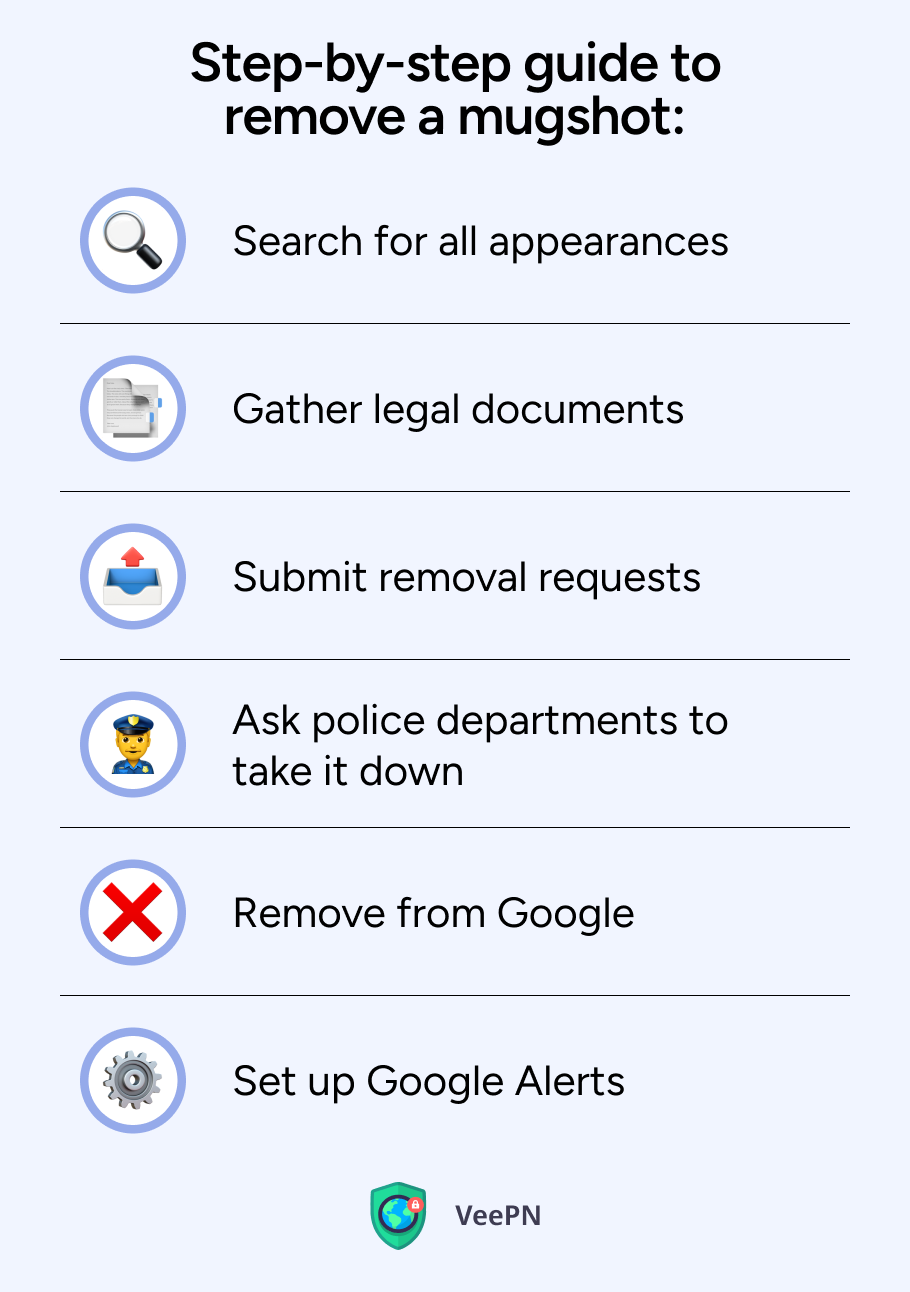
- Search for all appearances: Google your full name with terms like “mugshot,” “arrest,” or your case number. Use Google Images and reverse image search tools like TinEye to track photo placements.
- Gather legal documents: Have court documents ready that show expungement, case dismissal or not-guilty verdicts. These are often required to request a takedown.
- Submit removal requests: Each mugshot site is different. Visit their “contact” or “removal policy” pages. Attach your documents, a formal takedown request and specify which URLs to remove.
- Ask police departments to take it down: Sometimes, local police departments or county jail websites host booking photos. Call or email them, referencing case details and ask them to remove the image.
- Remove from Google: If the image is deleted but still shows in search results, use Google’s “Remove Outdated Content” tool to de-index the page. This will erase its visibility from search engines.
- Set up Google Alerts: Create alerts for your name and any aliases. You’ll get email notifications if your mugshot resurfaces or gets posted elsewhere.
But removal of your mugshot from the web doesn’t mean you’re completely private.
Privacy alert: the hidden dangers
Even after mugshot removal, personal data like addresses and phone numbers may still be online. Mugshot listings are often bundled with other sensitive info by data brokers. These digital breadcrumbs can be exploited by scammers and employers alike.
Here are the privacy risks you should be aware of:
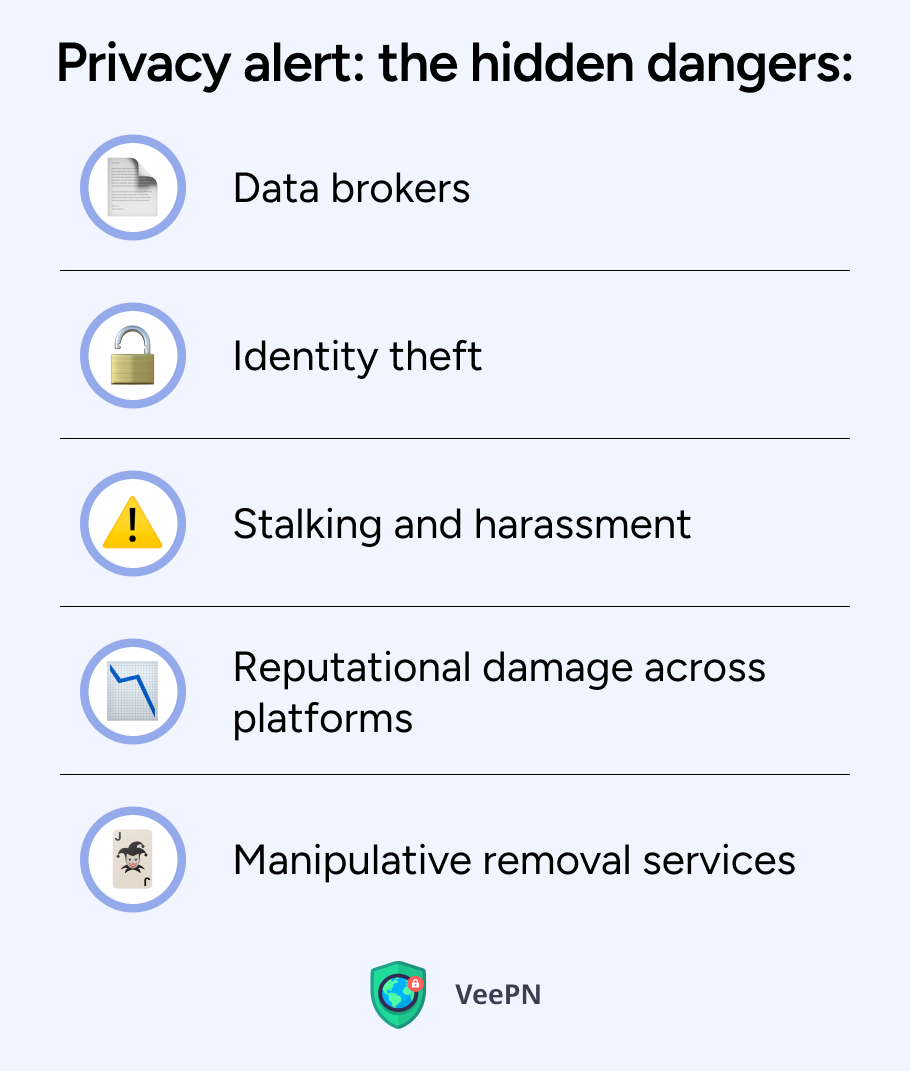
- Data brokers: Personal details such as phone numbers, email addresses and home locations may be harvested and sold to third-party advertisers or cybercriminals.
- Identity theft: Aggregated data can make it easier for bad actors to impersonate you or access your financial accounts.
- Stalking and harassment: Persistent availability of private information, combined with a mugshot, can make individuals vulnerable to targeted harassment or stalking.
- Reputational damage across platforms: Information may spread across people-search databases and social networks, where it becomes even harder to track and control.
- Manipulative removal services: Some companies may offer to clean up your data for high fees, only to exploit your situation without fully resolving the issue.
The danger isn’t just the mugshot itself but the broader ecosystem of digital data that surrounds and supports its visibility. That’s why digital hygiene and privacy protection tools are essential. And there’s no better way to protect your Internet privacy than using a virtual private network (VPN) application. But we don’t recommend using a free VPN service as it won’t provide you with sufficient protection. Instead, consider VeePN — a premium VPN app. Let’s see what it can do for you.
How VeePN can protect your online privacy
Using a VPN like VeePN helps you stay anonymous online. It hides your IP address, encrypts your Internet traffic and prevents data brokers from tracking your activity.
Additional features include:
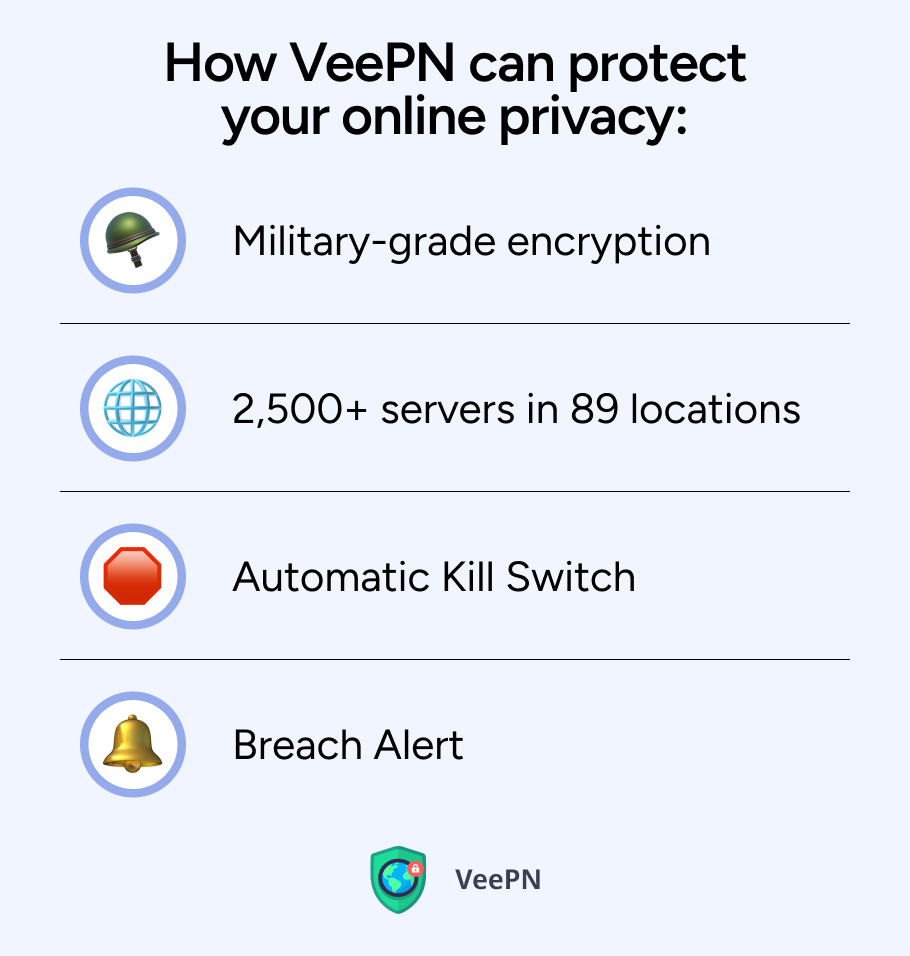
- Military-grade encryption: VeePN secures your online activities with advanced encryption standards that protect your data from hackers, snoopers and surveillance.
- 2,500+ servers in 89 locations: Access a vast and fast global server network, switch regions easily and ensure stable, anonymous connections.
- Automatic Kill Switch: This feature cuts your Internet connection if the VPN drops, so your data never leaks, not even for a second.
- Breach Alert: Get notified if your data is exposed in data breaches.
And VeePN is super easy to use. Check it out!
How to use VeePN
Follow these steps to protect yourself with VeePN:
- Sign up and choose a plan that fits you.

- Download and install the VeePN app on your device available on Windows, macOS, Android, iOS and browser extensions.

- Log in and connect to a server of your choice. For maximum anonymity, choose a server outside your country.
- Enable Automatic Kill Switch and Breach Alert to maximize your protection.
- Use browser extensions when browsing mugshot websites or submitting takedown requests to conceal your identity.
- Keep VeePN running whenever you’re online.
Try VeePN today and get a 30-day money-back guarantee!
FAQ
Find your mugshot by searching your full name on Google along with terms like “mugshot” or “arrest record.” Also, check common mugshot websites or local law enforcement databases, as some states make this information public online.
A mugshot stays online forever unless you take action—public-record sites and commercial “mugshot” websites keep it up for years (onlinereputation.com). Some US states require removal within 30 days of a formal request (like Georgia and Florida) or after expungement, but enforcement varies and many sites ignore these rules.
To remove an arrest record from the Internet, follow these steps:
- Request record expungement: First, check if you’re eligible to have your record sealed or expunged through the court system. If approved, it’s easier to remove it from public view.
- Contact the original source: If a police department or government site published the record, request removal or redaction once expunged.
- Submit removal requests to mugshot websites: Many sites have a takedown process, and some may charge a fee. Provide court documents if your case was dismissed or sealed.
- Use Google’s removal tools: You can request Google to remove outdated content or personal information from search results.
- Hire a reputation management service: If records are widespread, professionals can help suppress or eliminate search result visibility.
- Use VeePN and privacy tools: Tools like VeePN can help you browse and contact these services anonymously, protecting your identity during the process.
Removing an arrest record isn’t instant, as it often takes time and proof, especially with third-party data brokers.
VeePN is freedom
Download VeePN Client for All Platforms
Enjoy a smooth VPN experience anywhere, anytime. No matter the device you have — phone or laptop, tablet or router — VeePN’s next-gen data protection and ultra-fast speeds will cover all of them.
Download for PC Download for Mac IOS and Android App
IOS and Android App
Want secure browsing while reading this?
See the difference for yourself - Try VeePN PRO for 3-days for $1, no risk, no pressure.
Start My $1 TrialThen VeePN PRO 1-year plan
